Here's what my data looks like:
There are daily records, except for a gap from 2017-06-12 to 2017-06-16.
df2['timestamp'] = pd.to_datetime(df['timestamp'])
df2['timestamp'] = df2['timestamp'].map(lambda x:
datetime.datetime.strftime(x,'%Y-%m-%d'))
df2 = df2.convert_objects(convert_numeric = True)
df2 = df2.groupby('timestamp', as_index = False).sum()
I need to fill this missing gap and others with values for all fields (e.g. timestamp, temperature, humidity, light, pressure, speed, battery_voltage, etc...).
How can I accomplish this with Pandas?
This is what I have done before
weektime = pd.date_range(start = '06/04/2017', end = '12/05/2017', freq = 'W-SUN')
df['week'] = 'nan'
df['weektemp'] = 'nan'
df['weekhumidity'] = 'nan'
df['weeklight'] = 'nan'
df['weekpressure'] = 'nan'
df['weekspeed'] = 'nan'
df['weekbattery_voltage'] = 'nan'
for i in range(0,len(weektime)):
df['week'][i+1] = weektime[i]
df['weektemp'][i+1] = df['temperature'].iloc[7*i+1:7*i+7].sum()
df['weekhumidity'][i+1] = df['humidity'].iloc[7*i+1:7*i+7].sum()
df['weeklight'][i+1] = df['light'].iloc[7*i+1:7*i+7].sum()
df['weekpressure'][i+1] = df['pressure'].iloc[7*i+1:7*i+7].sum()
df['weekspeed'][i+1] = df['speed'].iloc[7*i+1:7*i+7].sum()
df['weekbattery_voltage'][i+1] =
df['battery_voltage'].iloc[7*i+1:7*i+7].sum()
i = i + 1
The value of sum is not correct. Cause the value of 2017-06-17 is a sum of 2017-06-12 to 2017-06-16. I do not want to add them again. This gap is not only one gap in the period. I want to fill all of them.
